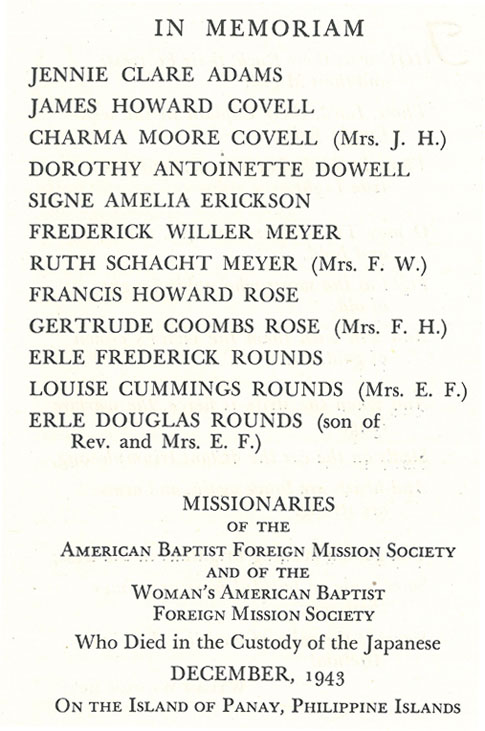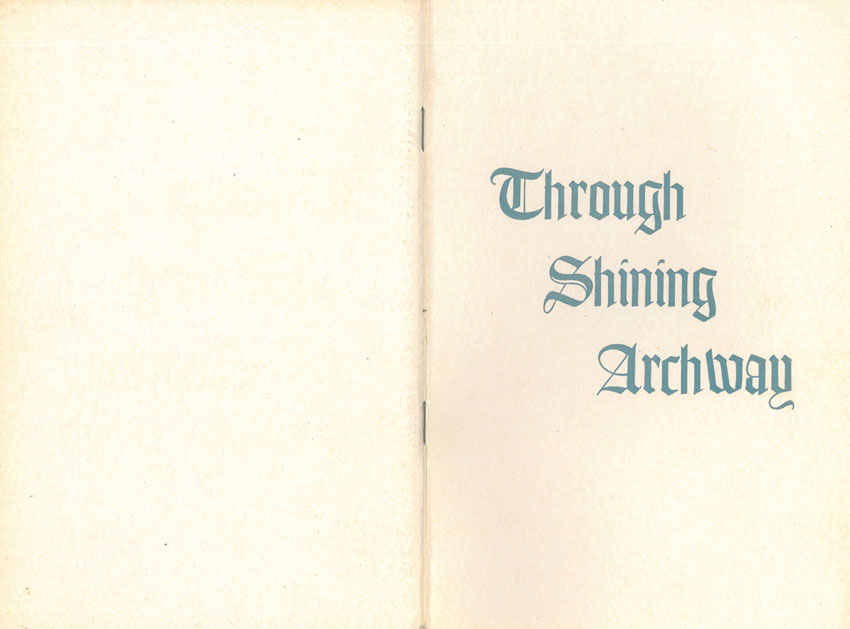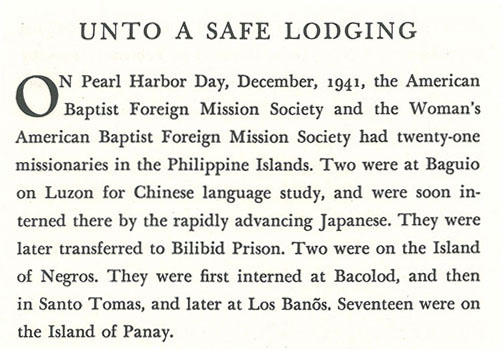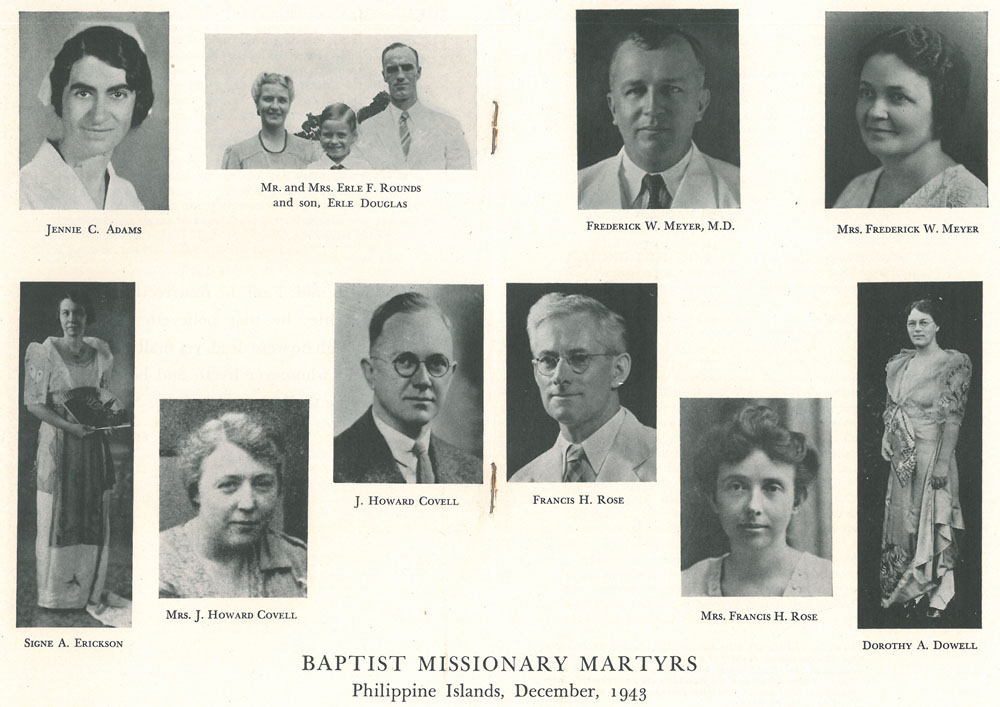In the summer of 1945, only a few short weeks before Japan's surrender ended the Second World War, the American Baptist Foreign Mission Society (ABFMS) along with the Woman's American Baptist Foreign Mission Society printed a small "memorial booklet" titled Through Shining Archway. This brief pamphlet commemorated the lives and missionary service of 12 American Baptist missionaries who were executed by Japanese forces in the Philippines in December 1943. Through Shining Archway contains a brief biographical sketch, photographs, prayers, and selected scriptures and was printed not only to honor the "martyred missionaries" but also to inspire others, especially young people in the Northern Baptist Convention, to consider foreign missionary service.
In the introduction to Through Shining Archway, ABFMS Home Secretary Jesse R. Wilson provides the few known details about the 12 missionaries' experiences in the Philippines from the outbreak of World War II to their eventual capture by Japanese forces two years later. At the outbreak of war in December 1943, the ABFMS had two mission hospitals in the Philippines in the cities of Capiz and Iloilo, both staffed by American medical missionaries. After Japanese forces gained control of the Island of Panay, the 10 hospital staff members at Iloilo were interned in a prison camp until their release in February 1945. On the opposite end of the island, the Capiz hospital staff members fled the city to a mountainous retreat prepared ahead of time in case of Japanese invasion. US military forces destroyed the hospital after it was vacated. Other missionaries fleeing the Philippines smuggled out a letter to ABFMS authorities from the Covells, which described the mountain hideaway the missionaries named "Hopevale": "We live in a grass hut with bamboo floor. The people around supply us with plenty to eat, and we have a good spring ... the Japanese came very close one day in February, and we have moved out thrice to hide.... Our prospects for freedom (in a larger sense) and seeing you all are most uncertain...."(7). For the next twenty months, the 12 Americans remained hidden from surrounding Japanese forces. The ABFMS received only a few, brief updates about their missing staff through various Americans who had escaped the island. But on March 20, 1943, the Provost Marshall General's office in Washington contacted ABFMS authorities with the news that "information believed to be reliable has been received which indicates they [the missionaries] died in Japanese custody on the Island of Panay, Philippine Islands, on 19 December 1943" (8). Further details about their deaths did not emerge until after the war ended. First-hand accounts by Filipino residents confirmed that Japanese forces had been vigilantly searching for the missing American missionaries and local villagers refused to assist their search efforts. Japanese soldiers eventually located the Hopevale on December 19th and executed their prisoners the next day after granting them an hour to pray together.
Describing the tragic deaths of the Hopevale missionaries, Jesse Wilson declared "[T]hey who through troubled months had only a lodge in the wilderness have now passed through heaven's shining archway unto a safe lodging, and there shall they be forever with their Lord" (11).
|

Above: The dedication page from Through Shining Archway.
|
|
Through Shining Archway is found in Folder 1-5 of Collection 44 The Papers of Helen Jaderquist Tenney. A keen advocate of foreign missions, Tenney was an active supporter of the Woman's Union Missionary Society, serving both as a board member and chronicling the society's history in her book No Higher Honor. Tenney's papers contain several commemorative pamphlets of missionaries, including her father, Dr. J. E. Jaderquist, who served in Sierra Leone.
Left: The first paragraph of Through Shining Archway, describing the fate of American missionaries in the South Pacific in the weeks immediately following the attack on Pearl Harbor on December 7, 1941.
Below: Photograph page depicting the executed missionaries. Note that the pamphlet describes the 12 individuals as "missionary martyrs" despite the fact that they were executed as political prisoners and not for their Christian faith. |
![]()



